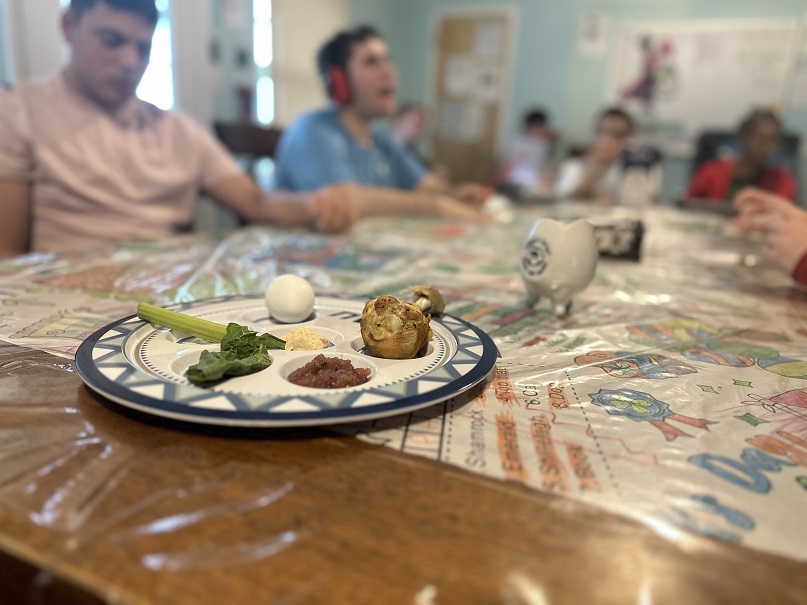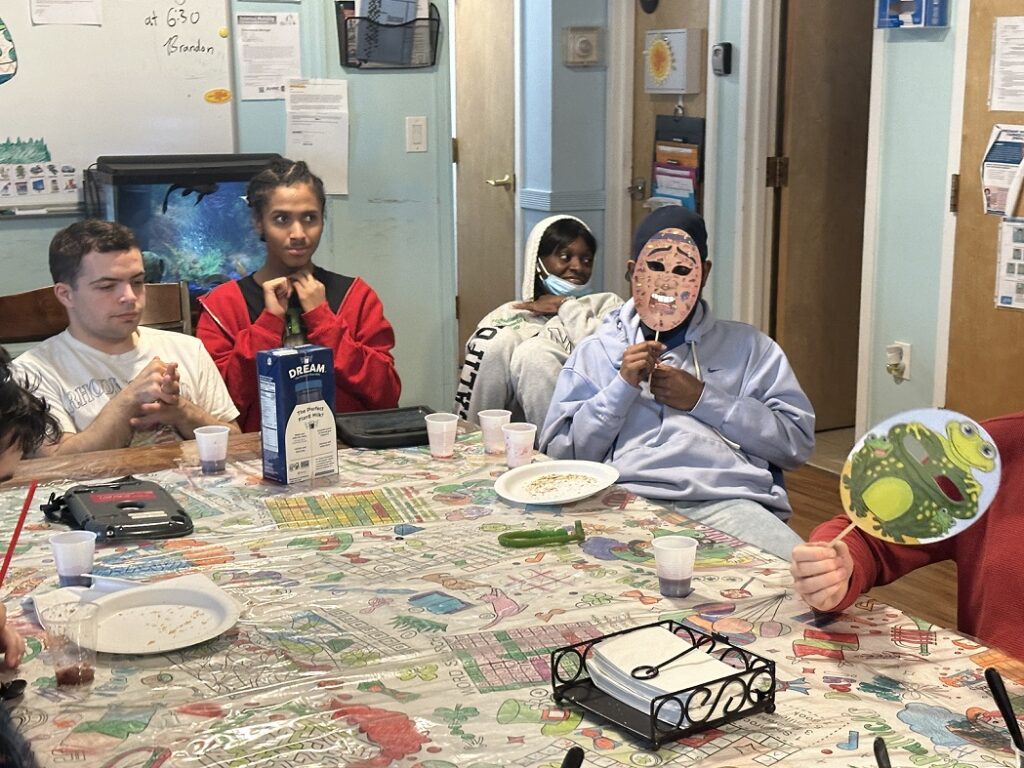Sharing Tradition, Creating Connection: CRP’s Annual Seder
 Every year, young people supported by Brookville Center for Children’s Services’ Children’s Residential Program (CRP) enjoy the cultural tradition of gathering for Passover Seder.
Every year, young people supported by Brookville Center for Children’s Services’ Children’s Residential Program (CRP) enjoy the cultural tradition of gathering for Passover Seder.
Led by Speech Pathologist Deborah Lapidus, everyone learns about the items on the Seder plate, hears the story of the Jewish people’s exodus out of Egypt, and participates in Passover activities like wearing masks to represent the plagues.
This year, on a rainy April afternoon, young men from residences in Lido Beach met around the dining room table in House 28 for the Seder. They were immediately drawn to the items on the Seder plate prepared by Assistant Manager Ronny Fisher, asking questions about the chicken bone, which represented the shankbone, and the matzah.
Once everyone was seated and ready to begin the Seder, Deborah began explaining all the items on the plate. She started by holding up each item and asking everyone what they saw.
“Eggs!” Noah Blumberg said, as Deborah held up the roasted egg.
She then explained to the young men that it symbolizes the circle of life.
From his iPad, Rojeh Samouhi communicated that there was a chicken bone on the plate. Deborah then explained that the shankbone represents the sacrifice at the temple.
Deborah held up the bitter herbs, asking the young men what they thought it was.
“Leaf, green leaf,” Miles Semilof said. Deborah explained that during the time the Jewish people were in Egypt, they suffered.
After explaining all the items on the seder plate, Deborah and Ronnie passed around cups of grape juice, which represent freedom and redemption, to everyone. The young men waited patiently for Deborah to begin the blessing, raising their cup of juice in the air as she said: “Blessed are You, Lord our God, King of the universe, who creates the fruit of the vine.”
Everyone then said “Amen” before drinking their juice.
It was finally time for the matzah, something all the young men were looking forward to. As everyone enjoyed multiple pieces of matzah, Deborah told the story behind the unleavened bread: “On the way out of Egypt, when Pharoah finally let them go, Moses said, ‘You have to bake quickly’ and there was no time to let the bread rise. So instead of making bread, they made matzah.”
 After passing around other culinary symbols for the young men to try, including celery dipped into salt water to represent the tears of enslaved people, Deborah brought out masks representing the plagues.
After passing around other culinary symbols for the young men to try, including celery dipped into salt water to represent the tears of enslaved people, Deborah brought out masks representing the plagues.
The masks, included frogs, locusts, and darkness, that were divine punishments brought to the Pharoah of Egypt until he released the Israelites from slavery.
Finally, Deborah finished the Passover story, recounting the eventual release of the Israelites and their crossing of the Red Sea.
After the Seder, the young men returned their masks and prepared for their night out at Bounce! Family Entertainment Center, where they’d get to enjoy jumping on the trampolines and navigating obstacle courses before a delicious dinner of pizza and salad. Deborah gathered all the items she brought, marking yet another year of sharing her heritage with young people supported by the CRP.
